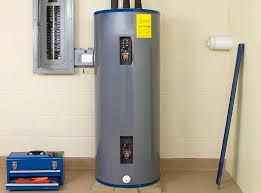Ensuring Longevity of Your Home's Hot Water System: Maintenance Advice
Ensuring Longevity of Your Home's Hot Water System: Maintenance Advice
Blog Article
We've found this post relating to Tips on Maintaining a Water Heater directly below on the web and reckoned it made perfect sense to talk about it with you here.

Hot water is crucial for daily convenience, whether it's for a rejuvenating shower or cleaning dishes. To ensure your warm water system runs efficiently and lasts longer, normal maintenance is crucial. This article offers sensible tips and insights on just how to maintain your home's warm water system to stay clear of disruptions and expensive fixings.
Introduction
Maintaining your home's hot water system could seem complicated, yet with a few easy actions, you can guarantee it runs efficiently for many years ahead. This overview covers everything from understanding your hot water system to do it yourself upkeep tips and recognizing when to hire expert assistance.
Relevance of Keeping Your Hot Water System
Regular maintenance not only extends the lifespan of your hot water system however likewise ensures it runs effectively. Overlooking upkeep can lead to reduced effectiveness, greater energy expenses, and also early failing of the system.
Signs Your Hot Water System Requirements Maintenance
Understanding when your hot water system needs interest can stop significant concerns. Keep an eye out for indicators such as irregular water temperature level, weird sounds from the heating system, or corroded water.
Flushing the Water Heater
Purging your hot water heater gets rid of debris build-up, enhancing performance and lengthening its life.
Monitoring and Changing Anode Rods
Anode rods protect against deterioration inside the container. Evaluating and changing them when worn out is essential.
Complex Issues Calling For Specialist Aid
Examples include major leakages, electric issues, or if your water heater is consistently underperforming.
Regular Expert Maintenance Advantages
Professional upkeep can consist of extensive evaluations, tune-ups, and ensuring conformity with security standards.
Examining and Adjusting Temperature Level Settings
Adjusting the temperature level settings makes certain ideal efficiency and safety.
Do It Yourself Tips for Maintenance
You can perform numerous maintenance jobs on your own to keep your warm water system in leading condition.
Looking for Leaks
Regularly check pipes and links for leakages, as these can result in water damages and higher costs.
Comprehending Your Warm Water System
Before diving right into upkeep tasks, it's handy to comprehend the basic elements of your warm water system. Usually, this includes the hot water heater itself, pipes, anode poles, and temperature controls.
Regular Monthly Upkeep Tasks
Routine month-to-month checks can assist capture minor problems prior to they rise.
Checking Pressure Relief Valves
Testing the pressure safety valve ensures it works correctly and stops excessive stress buildup.
Protecting Pipelines
Insulating hot water pipelines reduces warmth loss and can save energy.
When to Call a Specialist
While DIY maintenance is valuable, some issues need specialist know-how.
Verdict
Regular upkeep of your home's warm water system is essential for effectiveness, long life, and price savings. By adhering to these pointers and knowing when to seek expert aid, you can make certain a dependable supply of warm water without unexpected disruptions.
Water Heater Maintenance Tips
Test the TPR Valve
Shut off the power and the cold-water supply valve. Place a bucket under the pipe connected to the temperature-pressure-release (TPR) valve on the top or side of the tank. (This valve opens if the tank pressure gets too high.) Lift the valve’s tab to let some water out, then let go. If water keeps flowing, drain the tank partway, unscrew the old valve with a pipe wrench, and install a new one. Check the Anode Rod
Put a hose to the tank’s drain cock and let out a few gallons of water. Now fit a 1 1/16-inch socket onto the rod’s hex head on top of the heater (or under its top plate) and unscrew the rod. If it’s less than ½ inch thick or coated with calcium, buy a new one, wrap its threads with Teflon tape, put it back in the tank, and tighten securely. Use this segmented rod if headroom above the tank is limited. Drain the Tank and Wash Out Sediment
Drain the remaining water in the tank into the bucket, then stir up the sediment on the tank’s bottom by briefly opening the cold-water supply valve. Drain and repeat until clean water comes out of the hose. Close the drain cock, refill the tank, and turn its power back on. Adjust the Temperature
Find the temperature dial on the side of the tank and unscrew its cover. Adjust the dial to 120 degrees using a flathead screwdriver. For every 10 degrees the temperature is lowered, you can expect to save up to 5 percent in energy costs. Turn the water heater off or the thermostat down to its lowest setting if you plan to be away from home for more than three days. Insulate the Pipes
Buy some self-sticking 3/8-inch-thick foam pipe insulation that matches the pipes’ diameter. Slide the foam over the hot-and cold-water pipes as far as you can reach. Insulating the cold-water pipe prevents condensation in summer. Peel the tape and squeeze the insulation closed. If the pipe is 6 inches or less from the flue, cover it with 1-inch-thick unfaced fiberglass pipe wrap. https://www.thisoldhouse.com/plumbing/21016402/how-to-maintain-a-water-heater

We hope you liked our piece about Tips For Maintaining Your Hot Water Heater. Thanks a lot for taking a few minutes to read through our article post. Sharing is caring. Helping others is fun. Thanks for your time. Return soon.
Book Your Service Report this page